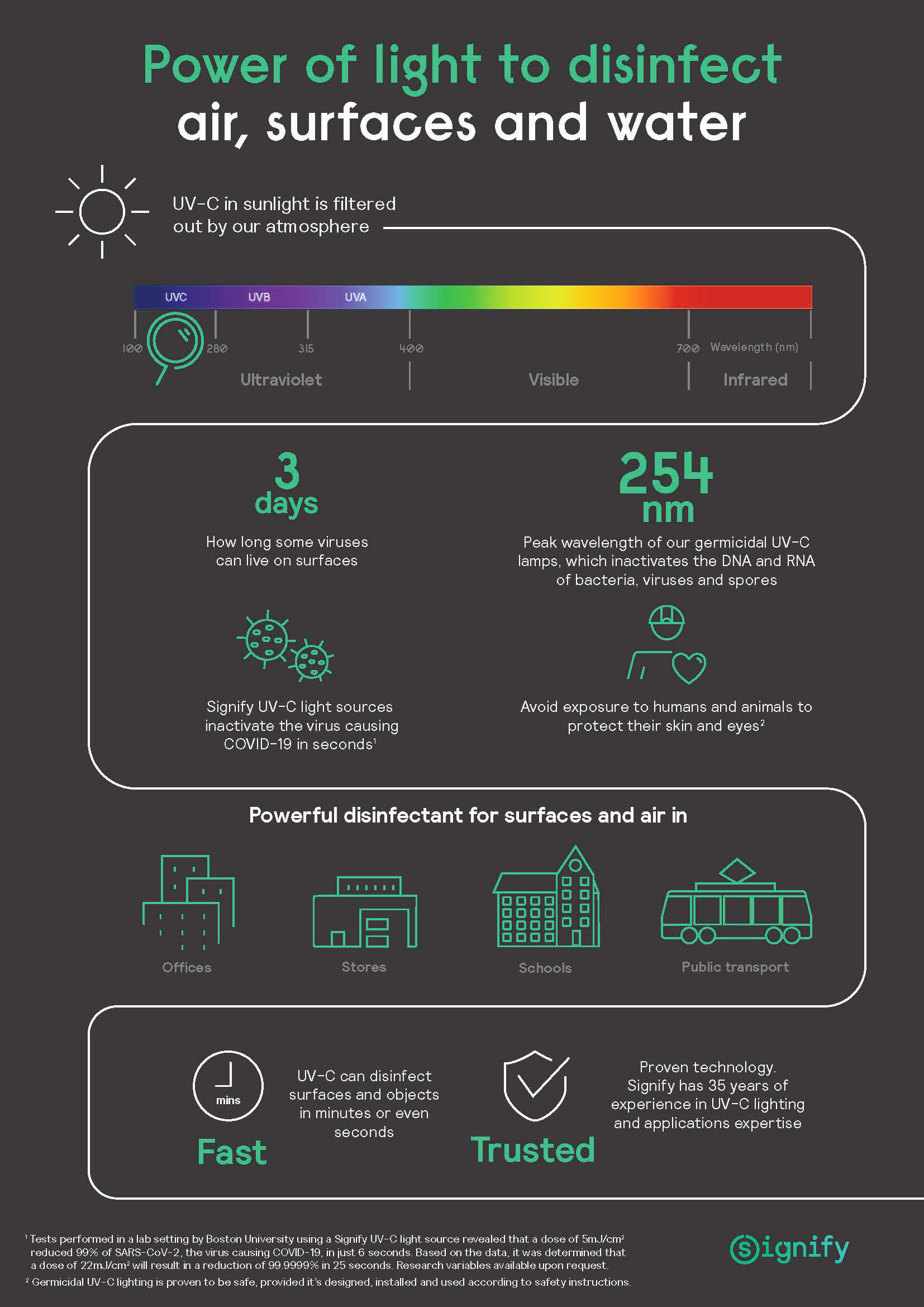As countries start to come out of lockdown there’s renewed focus on ensuring that workplaces, facilities, and all manner of public transport are safe to use. As organizations grapple with this new reality, a tried and tested disinfectant, in the form of ultraviolet (UV) lighting, is garnering huge interest.
Signify is expanding its UV lighting offering. It is increasing its UV-C lighting capacity eight-fold and recently announced 12 new families of products and systems aimed at professional markets. But what exactly is UV lighting, how does it work and where can it be applied?
First, some science. UV light is that part of the electromagnetic spectrum that spans 100-400 nanometers (nm). Basically, it is divided into three different types, A, B and C.
UV-A and UV-B is found in sunlight. It’s what gives you a suntan or sunburn. UV-B is well known for medical applications such as the treatment of psoriasis and is also responsible for the formation of bone-strengthening vitamin D.
Then there’s UV-C, which is an invisible light, spanning the range of 100-280 nm, and has powerful germicidal properties.
UV-C from the sunlight is filtered out by the Earth’s atmosphere. We should be thankful for this as exposure to certain wavelengths of UV-C radiation is hazardous to the skin and eyes of humans and animals. Despite this, UV-C lighting, when designed properly, installed correctly with safety instructions followed, is a safe and highly effective form of disinfection.


